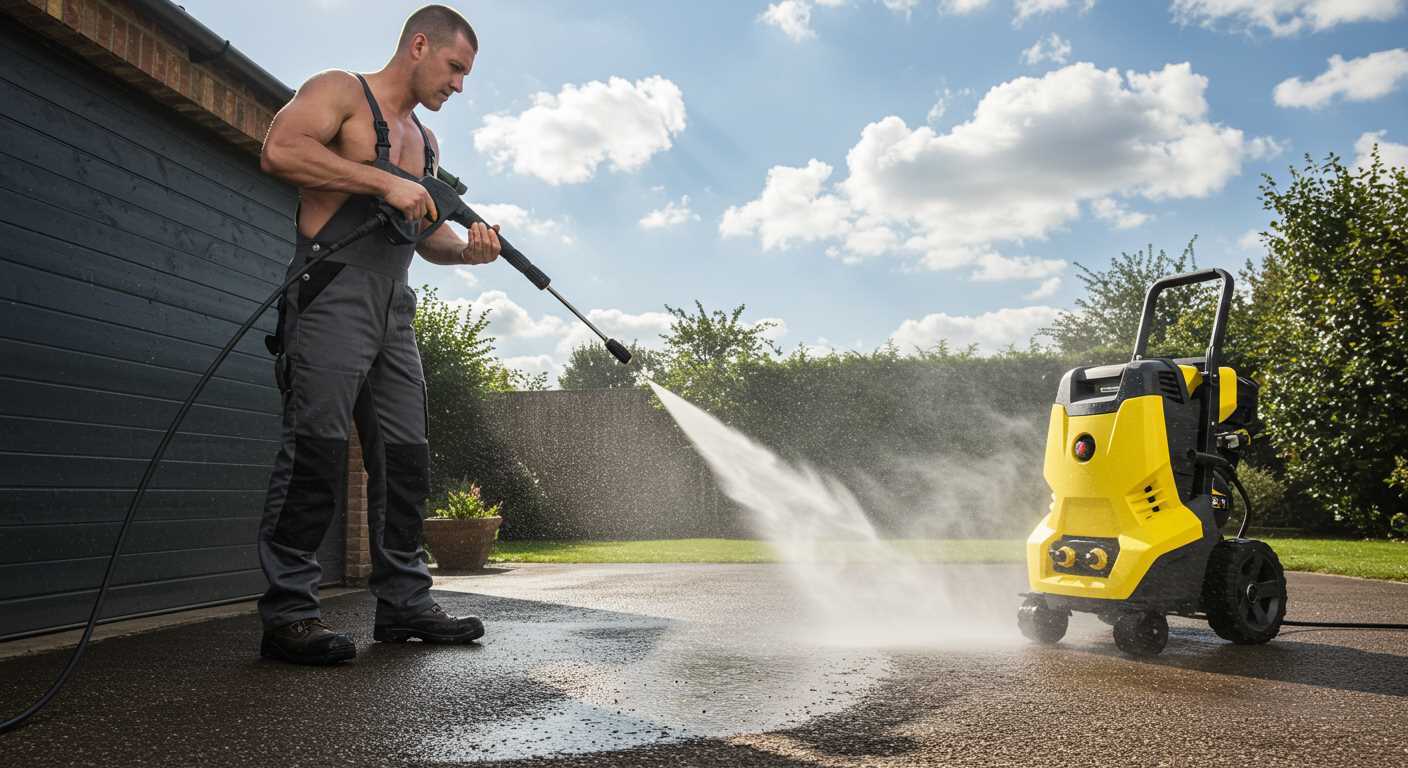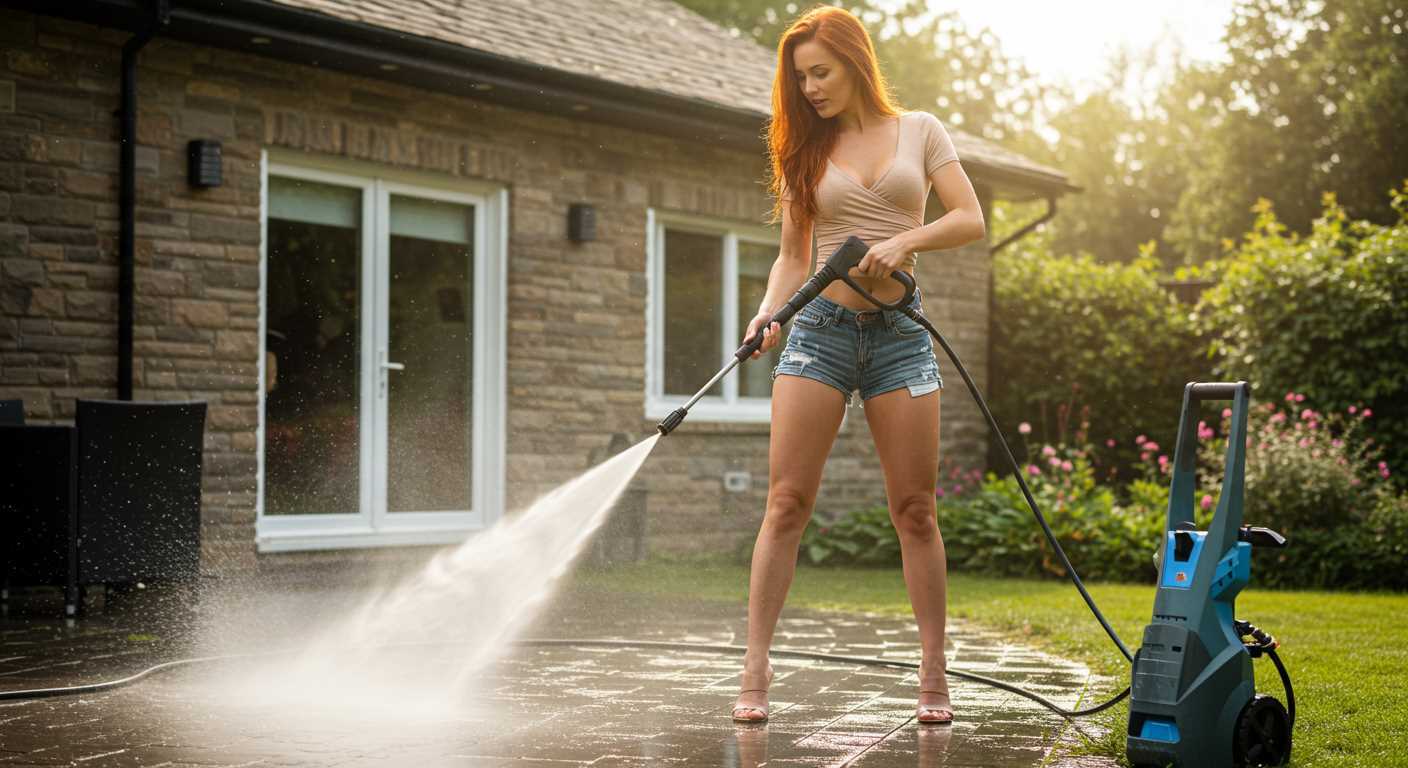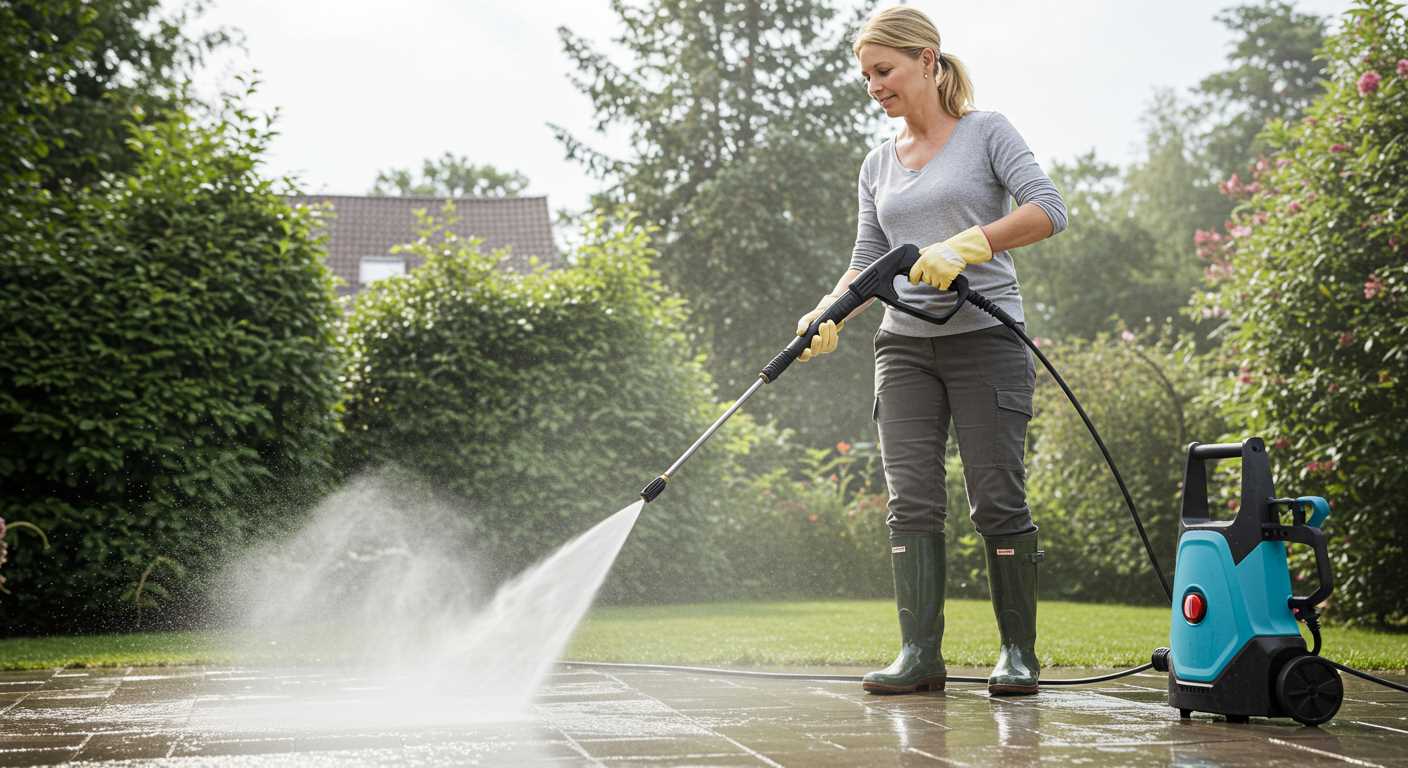




Start with a solution of vinegar and water, mixed in equal parts. This natural agent breaks down stubborn deposits effectively. Apply the mixture generously to the affected areas and let it sit for about 30 minutes. The acetic acid in the vinegar works wonders on mineral buildups.
Next, grab a stiff-bristled brush. You want something durable that can withstand a bit of scrubbing. After the vinegar solution has had time to work, use the brush to scrub the surface vigorously. Focus on spots that seem particularly resistant. It’s satisfying to see the grime lift away as you work.
If the residue persists, consider using baking soda. Sprinkle it over the damp area and scrub again. The combination of baking soda’s abrasiveness and the acidity of the vinegar creates a powerful duo for tackling tough stains. Rinse with warm water to finish.
For a deeper clean, a commercial cleaner designed for masonry can be effective. Follow the manufacturer’s instructions closely, ensuring proper safety measures are taken. These products are formulated to dissolve stubborn stains that might resist natural methods.
Lastly, keep your outdoor space maintained. Regular sweeping and occasional washing with soapy water can help prevent buildup. A proactive approach makes future clean-ups less daunting. Trust me, the effort you put in now will save you time and frustration later.
Choosing the right cleaning solution for cement stains
For tackling stubborn marks, consider vinegar or citric acid. Both are natural and can effectively break down mineral deposits. Mix equal parts of vinegar and water in a spray bottle and apply it generously. Allow it to sit for about 15 minutes before scrubbing with a stiff brush.
If you prefer a commercial option, look for products containing hydrochloric acid. These are specifically designed to dissolve tough residues. Always follow the manufacturer’s instructions and wear protective gloves. Test in a small area first to ensure it doesn’t damage the surface.
Baking soda also works wonders. Create a paste by mixing it with water and apply it to the stained area. Let it sit for at least half an hour before scrubbing. This method not only cleans but also deodorises the surface.
Enzymatic cleaners are another effective choice, particularly for organic stains. These solutions break down the stain at a molecular level. Apply according to the guidelines and give it time to work before rinsing.
For oil-based marks, a solvent like mineral spirits can be beneficial. Dab it on with a cloth, allowing it to penetrate the stain before blotting and rinsing. Always ventilate the area well when using solvents.
Preparing the patio surface before cleaning
Begin by removing any loose debris such as leaves, dirt, and small stones. A broom or a stiff-bristled brush works well for this task. Ensure the surface is as clear as possible to allow for effective treatment of stubborn marks.
Next, examine the area for larger items like furniture or planters. Move these away to prevent any obstruction while you tackle the stains. This also gives you better access to all sections of the surface, ensuring no spots are missed.
If you notice any large patches of grime, consider wetting them down with water. This can help to soften tough residues, making them easier to tackle later on. Just ensure you don’t saturate the area excessively, as too much water can complicate the cleaning process.
Check for any cracks or damage in the surface. If you find any, take note, as these areas may require special attention during the cleaning. Keeping an eye on these spots will help in maintaining the integrity of the surface while addressing the stains.
Finally, set up a safe working environment. Clear the area of any obstacles that could pose a risk while you work. Wear gloves and protective eyewear to safeguard yourself from any splashes or harsh chemicals you may use in the subsequent steps.
Using scrubbing techniques to remove cement
For stubborn stains that require some effort, manual scrubbing can be your best ally. Here’s a step-by-step approach that I’ve found to be effective over the years.
- Select the right tools:
- A stiff-bristled scrub brush is crucial. Look for one with a long handle for better leverage.
- Consider using a floor scrubber for larger areas, as it can save time and effort.
- For intricate spots, a wire brush or a smaller handheld scrub brush can be beneficial.
- Apply the cleaning solution:
- Use a sponge or cloth to apply the chosen solution evenly over the stained area.
- Let it sit for a specified duration, typically 15-30 minutes, to penetrate and break down the residue.
- Begin scrubbing:
- Start with circular motions. This technique helps to lift the material more effectively.
- Vary your pressure; apply more force in particularly tough spots, but avoid damaging the surface underneath.
- Rinse thoroughly:
- After scrubbing, use a garden hose to rinse the area well. This step ensures that all cleaning agents and loosened debris are washed away.
- If available, use a bucket of water to assist in rinsing smaller sections.
- Repeat if necessary:
- For persistent stains, reapply the solution and repeat the scrubbing process.
- Patience is key; sometimes, it may take several attempts to achieve satisfactory results.
This hands-on method has served me well, especially in challenging situations. Remember, a little elbow grease goes a long way in restoring the beauty of your surfaces!
Applying natural remedies for stubborn cement spots
Vinegar acts as an acidic solution that can effectively tackle hardened residues. Apply white vinegar directly to the affected areas and let it sit for about 30 minutes. The acidity will help break down the bond of the residue, making it easier to scrub away. Rinse thoroughly with water afterwards.
Baking soda is another reliable option. Create a paste by mixing baking soda with water and apply it to the stains. Let it sit for an hour, then scrub with a stiff brush. The abrasiveness of the baking soda combined with its alkaline properties can lift stubborn spots effectively.
For more intense stains, consider using a mixture of lemon juice and baking soda. This combination offers both acidity and abrasiveness, which is particularly effective against tough residues. Apply it to the stained areas, allow it to sit for 30 minutes, and scrub it gently before rinsing.
Lastly, hydrogen peroxide can also be used. Spray it directly on the stains and let it sit for 15 minutes. Its oxidising properties can help break down the material, making it easier to remove. Ensure you rinse well after treatment.
| Natural Remedy | Application Method | Recommended Time |
|---|---|---|
| Vinegar | Apply directly | 30 minutes |
| Baking Soda | Paste application | 1 hour |
| Lemon Juice & Baking Soda | Apply mixture | 30 minutes |
| Hydrogen Peroxide | Spray directly | 15 minutes |
For those considering machinery, check out the best pressure washers for cars for a powerful alternative. However, natural remedies can be a great first step to tackle those difficult spots effectively without the need for heavy equipment.
Finishing up: rinsing and drying the patio
Once scrubbing and treatment are complete, ensure thorough rinsing of the surface to eliminate any remaining residues. Use a garden hose with a spray nozzle set to a gentle flow. This allows for even distribution of water, preventing further staining from leftover cleaning agents. Start at one end and work methodically to the other, ensuring you cover the entire area.
After rinsing, inspect the surface for any missed spots or stubborn areas. It’s not uncommon for a few patches to need additional attention. If so, repeat the scrubbing process on those specific areas before rinsing again.
Allow the area to air dry naturally. This could take a few hours, depending on the weather conditions. If it’s a sunny day, the heat will help evaporate any remaining moisture quickly. However, if it’s cloudy or damp, consider using a clean, absorbent towel to gently blot the surface and accelerate drying.
Once dried, evaluate the surface. If the finish appears uneven or if any stains remain, you might need to revisit the cleaning solution or technique used. Learning from each session can help refine your approach for the next time. Keeping the area well-maintained post-cleaning will prolong its appearance and durability, reducing the need for intensive future treatments.
Maintaining a clean space after cement removal
Regular upkeep is key to preserving the appearance of your outdoor surfaces once the unwanted residue has been eliminated. Begin by routinely sweeping the area to remove dirt and debris. This simple action prevents grime from accumulating and keeps the space looking tidy.
For deeper refreshment, consider a gentle scrub with a solution made from vinegar and water. This not only helps in lifting any remaining dullness but also imparts a pleasant scent. Mix one part vinegar with three parts water, and apply with a soft brush. Rinse thoroughly after scrubbing to avoid any residue.
Pay attention to weather conditions as well. Rain can wash away stains, but prolonged exposure to moisture can lead to mildew growth. If your area is prone to dampness, using a leaf blower or squeegee to remove excess water promptly can be beneficial.
Once you’ve maintained cleanliness, think about applying a sealant. This protective layer not only enhances the surface’s appearance but also acts as a barrier against future stains. Choose a product suitable for the material of your outdoor area, ensuring longevity and ease of maintenance.
Lastly, if you ever decide to invest in a pressure cleaning tool for more comprehensive projects, consider checking a guide on how to match the right washer nozzle with the right job. Knowing your equipment will help you tackle various tasks more effectively.
FAQ:
What are some alternative methods to clean cement off a patio without using a pressure washer?
There are several methods to remove cement from a patio without a pressure washer. One option is to use a mixture of vinegar and water. The acidity of vinegar can help break down the cement. Simply spray or pour the solution onto the affected areas, let it sit for a while, and then scrub with a stiff brush. Another method involves using a commercial cement remover, which can be applied according to the manufacturer’s instructions. Additionally, you can create a paste using baking soda and water, apply it to the cement, let it sit, and scrub it off later.
How long does it typically take to remove cement from a patio using manual methods?
The time it takes to remove cement from a patio manually can vary depending on the size of the affected area and the amount of cement to be removed. Generally, you might spend anywhere from a few hours to a full day on the job. After applying your chosen cleaning solution, you should allow it to sit for at least 30 minutes to an hour to effectively loosen the cement. Then, expect to spend additional time scrubbing and rinsing the area thoroughly.
Are there any risks associated with using acidic cleaners on patio surfaces?
Yes, using acidic cleaners can pose risks, especially if the patio is made of certain materials like natural stone or coloured concrete. Acid can etch or discolour these surfaces, leading to permanent damage. It’s vital to test any cleaner on a small, inconspicuous area first. If you’re unsure, consider using a gentler cleaning solution or consult with a professional to avoid damaging your patio.
Can I use household items to clean cement off my patio, and if so, what are some examples?
Absolutely, several household items can be effective in cleaning cement off a patio. For instance, white vinegar can dissolve cement residue due to its acidity. Baking soda mixed with water can form a paste that helps lift cement stains. Dish soap mixed with warm water can also be used to scrub the area effectively. These items are often safer for various patio materials compared to harsher chemicals.
Is it necessary to seal the patio after cleaning off the cement, and what are the benefits?
It is advisable to seal your patio after cleaning, especially if it has been stripped of any existing sealant during the cleaning process. Sealing helps protect the surface from future stains, makes it easier to clean, and provides a barrier against moisture. This can prolong the life of the patio and maintain its appearance. Be sure to choose a sealant appropriate for the specific material of your patio for the best results.
What are some effective methods to clean cement off a patio without using a pressure washer?
There are several effective methods to clean cement off a patio without a pressure washer. One popular approach is to use a mixture of vinegar and water. Combine equal parts of white vinegar and water in a spray bottle, apply it to the cement stains, and let it sit for about 30 minutes. Afterward, scrub the area with a stiff-bristled brush and rinse it with clean water. Another option is to use baking soda as a gentle abrasive. Make a paste with baking soda and water, apply it to the stains, and scrub with a brush. For tougher stains, consider using a commercial concrete cleaner that is safe for outdoor use. Always remember to test any cleaning solution on a small, less visible area first.
How long does it typically take to clean cement off a patio using these methods?
The time it takes to clean cement off a patio can vary depending on the size of the area and the severity of the stains. Using vinegar and water might take about 1 to 2 hours in total, including the soaking time of 30 minutes and scrubbing. If you opt for baking soda, you might spend a similar amount of time, as you will need to let the paste sit for a while before scrubbing. For commercial cleaners, follow the manufacturer’s instructions, but they generally require similar time frames. Keep in mind that additional stubborn stains may need repeated applications or prolonged soaking, which could extend the overall cleaning process.






.jpg)


